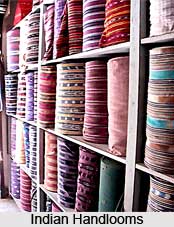 The Ministry of Textiles is responsible for policy formulation, planning, development export promotion and trade regulation in respect of the textile sector. This includes all natural and man-made cellulosic fibres that go into the making of textiles, clothing and handicrafts. The developmental activities of the Ministry are oriented towards making adequate quantities of raw material available to all sectors of the textile industry and augmenting the production of fabrics at reasonable prices from the organised and decentralised sectors of the industry. Towards this objective, the Ministry lays down guidelines for a planned and harmonious growth of various sectors of the industry. Special emphasis is given to the development of handlooms in view of its large employment potential. The Ministry monitors the techno-economic status of the industry and provides the requisite policy framework for modernisation and rehabilitation. The Ministry coordinates the activities of Textiles Research Associations and lends financial support to them for undertaking research and development.
The Ministry of Textiles is responsible for policy formulation, planning, development export promotion and trade regulation in respect of the textile sector. This includes all natural and man-made cellulosic fibres that go into the making of textiles, clothing and handicrafts. The developmental activities of the Ministry are oriented towards making adequate quantities of raw material available to all sectors of the textile industry and augmenting the production of fabrics at reasonable prices from the organised and decentralised sectors of the industry. Towards this objective, the Ministry lays down guidelines for a planned and harmonious growth of various sectors of the industry. Special emphasis is given to the development of handlooms in view of its large employment potential. The Ministry monitors the techno-economic status of the industry and provides the requisite policy framework for modernisation and rehabilitation. The Ministry coordinates the activities of Textiles Research Associations and lends financial support to them for undertaking research and development.
The Ministry of Textiles is headed by a Secretary who is assisted in the discharge of his duties by 4 Joint Secretaries, Economic Advisor and the Development Commissioners for Handlooms and Handicrafts, Textile Commissioner and Jute Commissioner. The principal functional areas of the Ministry cover the following- Textile Policy and Coordination, Man-made Fibre/ Filament Yarn Industry, Cotton Textile Industry, Jute Industry, Silk and Silk Textile Industry, Wool and Woollen Industry and Decentralised Powerloom Sector, Export Promotion, Planning and Economic Analysis, Integrated Finance Matters and Information Technology.
This article is a stub. You can enrich by adding more information to it. Send your Write Up to content@indianetzone.com






